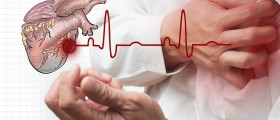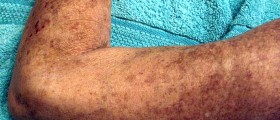
Pulmonary embolism or PE is caused by the blockage of the main artery of the lungs. It can also happen if a branch of this artery gets obstructed. The cause of the block is something from the body and this substance has been traveling through the blood, ending in the lung artery and thus caused the obstruction. It can be some blood clot from deep veins located in the legs (embolism of a thrombus), or in rare cases, the substance might be the fat, amniotic fluid or even the air. As the result of lung obstruction there is increased pressure on the heart, especially on the right ventricle of the heart and this is responsible for all symptoms of this condition.
There are three factors, which determine whether the patient is going to form the thrombus and these are known as Virchow triad (triad means three). This triad includes presence of some endothelial injury, stasis or turbulence of the blood as well as the hypercoagulability (excessive clotting) of the blood.
Who is Prone to Pulmonary Edema?
Patients who have to stay in bed for a long period of time are known to be at increased risk to develop pulmonary edema. According to the statistics, about 90% of reported PE cases have been linked to the thrombus for large veins of the legs, especially to popliteal vein and some other larger veins. Patients suffering from cancers may also develop this problem.
Consequences of pulmonary edema mainly depend on the condition of the patients’ heart and lungs. Significant role in the potential consequences also has the size of the thrombus and pulmonary artery affected with the obstruction.
PE Signs and Symptoms
Patients suffering from pulmonary embolism usually complain about breathing problems, such as shortness of breath or rapid breathing and chest pain when they try to breathe. Palpitations are also frequently seen in PE patients and some of them may experience cough or even cough up some blood (condition called hemoptysis). Sometimes, there might be low grade fever or rarely, peripheral edemas, liver congestion, jaundice or some fluid in the abdomen (ascites).
If the condition is very serious, patients may become cyanotic, with their lips and fingers turning pale and bluish. They could also collapse and experience abnormally low blood pressure and circulatory instability. About 15% of all reported sudden deaths is associated with acute pulmonary embolism.
Diagnostic Methods
Ventilation/perfusion (V/Q) scintigraphy was the main method used to diagnose pulmonary embolism for many years. However, computed tomography (CT) scanning is now another valuable test to evaluate both deep venous thrombosis (DVT) and pulmonary embolism. Patients may also be diagnosed using conventional pulmonary angiography, if the results are non-diagnostic.

















Your thoughts on this
Loading...